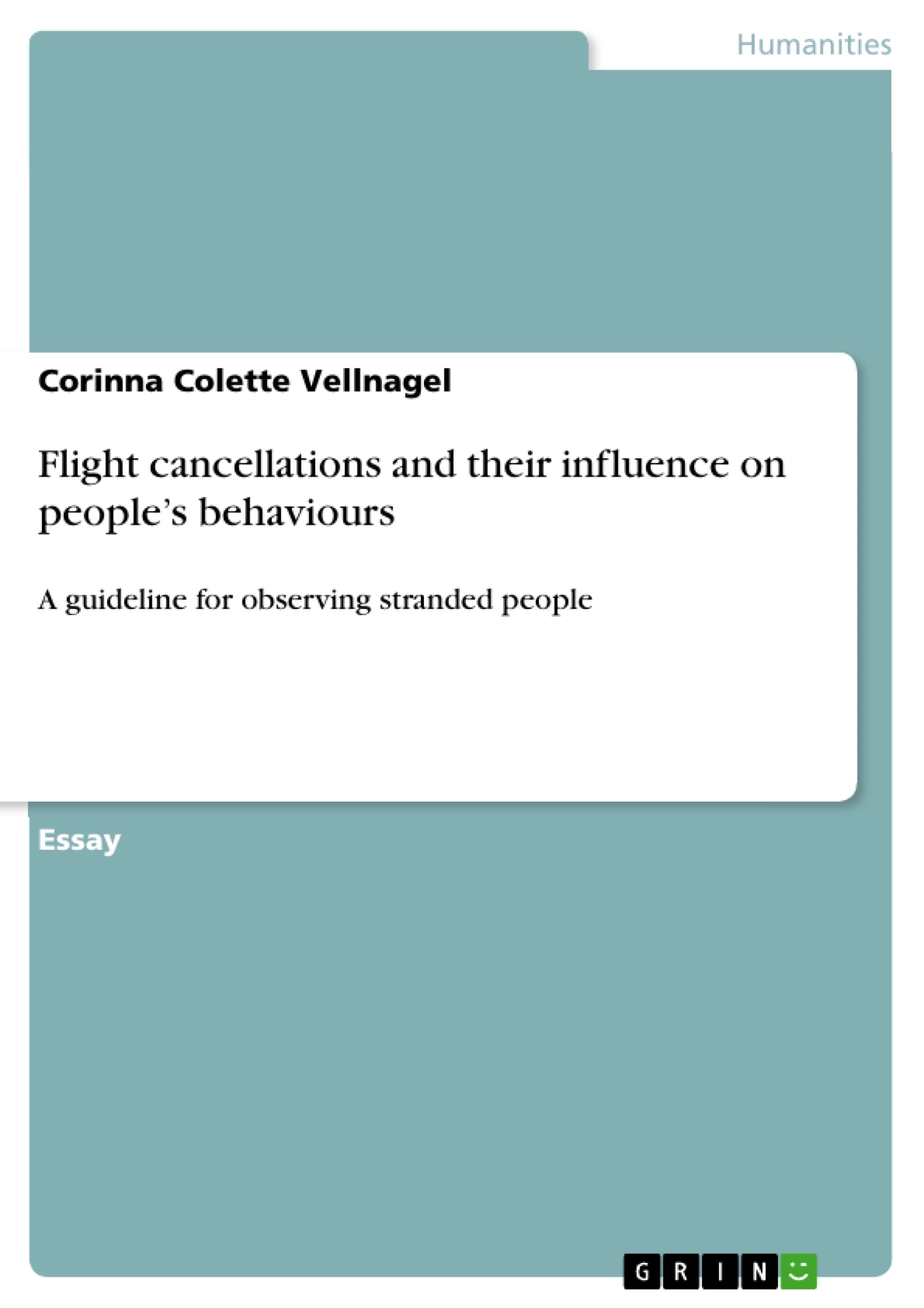Stress is a universally known phenomenon and in stress situations everybody acts and behaves differently; some people stay calm in certain situations while others completely freak out. Stress situations occur every day, but not all are recognised as such. There are stress situations which appear regularly, such as an overstuffed schedule; and there are those stress situations which primarily have nothing to do with a tight schedule, because they only occur once in a while. Imagine the following: You are at an airport and about to fly home, on holidays or away for work and at the airport there is nothing but total chaos because almost all flights have been cancelled due to unpredictable incidents such as bad weather conditions or a volcanic ash cloud, which both occurred in 2010. How do you think would most people react? There are not many ways to find out how people behave in this specific stress situation. Interviewing people at the airport would be an option, handing out questionnaires would be another option; but without a doubt people would not be in the cheer to answer questions or fill out a form; and collecting data afterwards would probably distort the results, because it is not contemporary enough.
This paper deals with the research method observation; in order to understand how observation can be used in research, chapter two sets the theoretical background on observation methods, including error sources and application possibilities. The third chapter gives a theoretical approach of evaluating data through observation. This approach deals with people’s behaviours while being stranded at an international airport such as Heathrow, Frankfurt or Paris. How do people deal with such a stressful situation? What kind of reactions and behaviours can be observed when people find out that there flight has been cancelled? This kind of stress is not comparable to everyday stress; therefore the working definition of a stress situation used in this work, which is based on the ideas of Barton Cunningham (2000), is as follows: Stress is a universally appearing human response which resulted from the apperception of and distressing and intense experience. It may also be referred to as conflict, anxiety, frustration, conflict, emotional trauma and pressure. Last but not least, the paper concludes with a short review and possible chances and difficulties in chapter four.
Inhaltsverzeichnis (Table of Contents)
- Introduction
- Theoretical Foundations of Observation Methods
- Formal Sociology
- Dramaturgical Sociology
- Public Realm
- Auto-Observation
- Ethnomethodology
- Data Evaluation Through Observation
- Review and Possible Chances and Difficulties
Zielsetzung und Themenschwerpunkte (Objectives and Key Themes)
This paper explores the research method of observation, specifically focusing on its application in studying people's behavior in stressful situations like flight cancellations at international airports. The main objective is to understand how observation can be used to gather insights into human reactions and behaviors in such situations.
- The theoretical foundations of observation methods in social sciences
- The application of observation in analyzing human behavior in stressful situations
- The use of observation as a research tool for studying flight cancellations and their influence on people's behaviors
- The advantages and limitations of observation as a research method
- The role of stress in shaping human reactions and behaviors
Zusammenfassung der Kapitel (Chapter Summaries)
The first chapter introduces the concept of stress and its universal impact on human behavior, specifically in the context of flight cancellations. It highlights the challenges of gathering reliable data on people's reactions in such stressful situations and emphasizes the importance of observation as a research method.
The second chapter delves into the theoretical foundations of observation methods, discussing various observational paradigms and their historical development within social sciences. These paradigms include formal sociology, dramaturgical sociology, public realm, auto-observation, and ethnomethodology. The chapter explores the unique strengths and limitations of each paradigm and its potential application in social research.
The third chapter focuses on the process of evaluating data obtained through observation, particularly in the context of analyzing people's behavior at international airports during flight cancellations. It aims to understand how individuals cope with stress and what kinds of reactions and behaviors can be observed in these situations.
Schlüsselwörter (Keywords)
The key terms and focus topics of this paper include observation methods, social sciences, stress, human behavior, flight cancellations, international airports, data evaluation, qualitative research, and ethnomethodology.
- Quote paper
- B.A. Corinna Colette Vellnagel (Author), 2011, Flight cancellations and their influence on people’s behaviours, Munich, GRIN Verlag, https://www.grin.com/document/167254



